#and six is american film noir
Explore tagged Tumblr posts
Text
Sea of Love is a 1989 American neo-noir[4] thriller film directed by Harold Becker, written by Richard Price and starring Al Pacino, Ellen Barkin and John Goodman. The story concerns a New York City detective trying to catch a serial killer who finds victims through the singles column in a newspaper.[5]
It is inspired by Price's 1978 novel Ladies' Man.[6] The film does not credit the novel Ladies’ Man as source material because the novel only shares a similar main idea, while having different characters, a different plot and a different theme. Writer Richard Price said he wanted to explore the same idea as Ladies’ Man, but make the protagonist cooler to an audience (by making him a cop and giving him a gun). The film involves the investigation of a serial killer which is completely absent from the book.
(by making him a cop and giving him a gun)
the most detailed description of Ladies' Man I can find:
Kenny Becker just dumped his girlfriend--the reasons are a little complex. Young and newly unemployed, his main assets at the moment are six-pack abs and a healthy libido--he's ready to get out, find a little action, and maybe find himself too. But New York is no place for the lonely, and with one meaningless sexual encounter after another, Kenny begins to wonder if the singles scene is not itself a complete con job, with his heart and his future at stake. Raunchy, funny, and surprisingly heartfelt, this 1978 clubland slice-of-life displays Richard Price in gritty good form.
deeply unclear how this is meant to have inspired sea of love. it...involves dating? in new york?
7 notes
·
View notes
Text
Here we go again, we're changing the scene.
Script below the break.
Hello and welcome back to The Rewatch Rewind! My name is Jane and this is the podcast where I count down my top 40 most frequently rewatched movies in a 20-year period. Today I will be discussing number six on my list: Shipwrecked Comedy and American Black Market’s 2017 film noir parody The Case of the Gilded Lily, directed by William J. Stribling, written by Sean Persaud and Sinéad Persaud, and starring Sean Persaud, Sinéad Persaud, Sarah Grace Hart, and Mary Kate Wiles.
It's 1939 in Los Angeles. Hardboiled private eye Ford Phillips (Sean Persaud) doesn’t touch Hollywood cases, until junior ace reporter Fig Wineshine (Sinéad Persaud) convinces him to help her childhood friend, starlet Wilhelmina Vanderjetski (Sarah Grace Hart) find out who is blackmailing her.
In my episode about Edgar Allan Poe’s Murder Mystery Dinner Party, which was number 13 on this list, I discussed how I found and fell in love with the work of Shipwrecked Comedy. If you haven’t listened to or don’t remember that episode, to summarize, I had incredibly high expectations for Edgar Allan Poe’s Murder Mystery Dinner Party, aka Poe Party, that were exceeded in every possible way, and in joining this small but enthusiastic fandom, I finally felt that I had found my people. I was very excited to learn what Shipwrecked’s next project would be, and I didn’t have long to wait. On May 30, 2017, just under seven months after the Poe Party finale, they shared a teaser poster for The Case of the Gilded Lily, which showed silhouettes of the Core Four (Sarah Grace Hart, Sinéad Persaud, Sean Persaud, and Mary Kate Wiles) in a style consistent with film noir. Since one of my favorite things about Poe Party had been the way it reminded me of classic movies, I was ecstatic to see them leaning even more directly into Old Hollywood.
The Kickstarter campaign launched a week later. Unlike Poe Party, which was an 11-episode series, Gilded Lily would be a short film, and they were only asking for $25,000. It didn’t even occur to me to be disappointed that this was going to be so much smaller; I was just excited that Shipwrecked was making another project so soon. In some ways, this Kickstarter experience was similar to the Poe Party one – the fun livestreams with backers’ names on the wall, the character reveals when milestones were reached – but in others, it was very different. For one thing, I had by this point met Shipwrecked and gotten to know many of their other fans, so instead of interacting with a bunch of pleasant strangers, these livestreams felt more like hanging out with friends. And for another, they reached their goal in less than a week, whereas Poe Party had taken almost a month, so it felt a lot less stressful, at least from a will-this-get-to-exist? perspective. They set a few stretch goals and ended up raising just over $43,000 by the time the campaign ended on June 25. I pledged a bit more to this project than I had to Poe Party, partly because I felt like I owed them for how much Poe Party had already changed my life, but also of course because of how thrilled I was that they were making something else that was related to my interests.
The main reason they were making Gilded Lily right then was because they had been invited to premiere a new project at Buffer Festival in Toronto, where they had screened all of Poe Party the year before when only the first 9 episodes were up on YouTube. I would have loved to have gone, both to see Poe Party and to see Gilded Lily, but it didn’t work out. However, Kickstarter backers at the $25 level and up would get access to watch The Case of the Gilded Lily soon after Buffer, before it was posted publicly, and that was good enough for me. Buffer Festival was only about three months after the Kickstarter ended, so Shipwrecked had a ridiculously short period of time to complete this video that they had originally intended to be about 20 minutes long but ended up with a runtime nearly twice that. I still don’t understand how they did it. I know, from talking to members of Shipwrecked at the time and from behind-the-scenes content they’ve released, that they were incredibly stressed about things like finding and locking locations, a cast member having to drop out last minute, and, of course, the budget, but still, they managed it. They successfully premiered their 38-minute long “short” film at Buffer Festival 2017 and emailed a link to backers a couple weeks later, on October 12.
I had a lot of trouble setting my expectations for The Case of the Gilded Lily. This group had just made Poe Party, so I knew they were capable of greatness, but I also knew I had no right to expect this to be on the same level as that, since it was always intended to be a much smaller project. I was sure I was going to enjoy it, but I was very curious to see how much. The first thing that struck me after I clicked the early access link was the music. The soundtrack was composed by Dylan Glatthorn, who had also composed the Poe Party soundtrack, which I absolutely should have mentioned in that episode because it is incredible. But the Gilded Lily soundtrack is somehow even better. Shipwrecked had released a video of a song from the short called “A Change of Scene” in September, written by Glatthorn and performed by Mary Kate Wiles as lounge singer Vivian Nightingale (a name that had been mentioned in Poe Party), so I already knew that was a bop, but it didn’t prepare me for how hard the opening credits music would slap. The theme is so delightfully jazzy that even after nearly six years, I can’t sit still when I hear it. That music over the black and white shots of the Hollywoodland sign and palm trees was the perfect way to set the scene. And then the opening credits finished and the film itself began.
So here’s the thing about film noir. In general, I enjoy it: I think it’s a fascinating filmmaking style and a very effective technique to tell a certain type of story, and two of my other top 40 most frequently rewatched films – Notorious and Gaslight – are fairly noir-esque, but also, film noir can get very dark. Every November, along with many film lovers on the internet, I celebrate Noirvember, a time to watch and appreciate film noir. In 2015, I actually managed to watch 30 noirs in Noirvember, and by the end of the month I noticed that it was really getting to me. I was starting to feel a constant vague sense of unease, dread, and despair. So in every November since then I’ve forced myself to consume noirs somewhat more moderately. I must have known that Gilded Lily was going to be more of a parody and not like one of the darker noirs. The group was called Shipwrecked Comedy, after all. But even Poe Party had had some pretty dark moments. I’m sure I expected jokes in The Case of the Gilded Lily, but I was utterly floored by just how laugh-out-loud funny the whole darn film was. It wasn’t dark at all, at least compared to most noirs or even to Poe Party. There wasn’t even any murder! The first time I watched it, I must have missed at least half the jokes because I was still laughing at prior gags. The plot was just as complicated and twisty as most noirs, but that first time I was barely paying attention because, again, too much laughing. Therefore, once I finished it, I naturally had to immediately rewatch it several times to pick up on the jokes and plot points I’d missed, and I was delighted but not at all surprised to find that it held up very well. I don’t recall exactly how many times I’d seen it before the link was made public on December 11, but by the end of 2017 I’d watched it nine times. I then watched it four times in 2018, six times in 2019, five times in 2020, three times in 2021, and four times in 2022. And I still think the jokes are funny. So if you haven’t watched it, you absolutely should, it’s still available for free on YouTube (link in the show notes) and it’s like the length of one episode of a TV show.
There are so many different types of humor in this film, and all of them are great. There’s the whole playing with and making fun of noir tropes aspect, including several instances of characters interrupting each other’s voiceovers, a camera rotation into a Dutch angle causing Ford to fall over, and Wilhelmina trying to smoke and drink to fit in but not quite understanding the concept. That last one serves the dual purpose of making fun of the excessive smoking and drinking common in noirs and further developing one of my favorite types of character: the confidently clueless. The Case of the Gilded Lily has two of these: Wilhelmina Vanderjetski, the starlet who’s being blackmailed, played by Sarah Grace Hart, and Dash Gunfire, Ford’s rival private eye, played by Joey Richter. Wilhelmina’s cluelessness mostly makes her happy and charming, whereas Dash’s makes him frustrated and annoying, and it’s very entertaining to see two such similar yet very different characters in the same project. Basically everything either of them says or does makes me laugh. There’s also some great physical comedy, mainly from Clayton Farris as the disgruntled Buster Keaton. Similarly, there’s humor with the set and props, like when Cliff Calloway (played by Tom DeTrinis) switches between smoking a cigar and a cigarette in the same scene depending on who he’s talking to, and when Officer Claudette Knickerbocker (played by Joanna Sotomura) is talking to Ford on the phone about how hot she finds Cliff, and it cuts away to Ford putting down the phone and pouring himself a drink and when we see Claudette again her office is in complete disarray. And then there are all the hilarious running gags. Like how whenever someone brings up that Wilhelmina’s real name is Lily THomas, Ford has to argue that it should be pronounced Thomas. And how every time the scene changes after Vivian sings “A Change of Scene” the first time, there’s a little reprise of her singing about how we’re changing the scene. And the way Fig is obsessed with cookies and keeps getting them – I am truly in awe of Sinéad Persaud’s brilliance in writing a character for herself that required her to eat lots of cookies. What an iconic move. And then there’s the running bit where Ford will pause and stare into the distance dramatically before mentioning The War, much to Fig’s confusion, until it’s finally revealed that The War was a movie he and Claudette acted in when they were children. Another running bit is the bartender Bixby Crane (played by Dante Swain) repeatedly saying his own name unnecessarily, and taking things very literally in unexpected ways. This bit was particularly funny to me because my high school band director’s name was Parker Bixby, and when we marched in the Tournament of Roses parade, one of the announcers commented, “I want to change my name to Parker Bixby.” Later somebody put that on t-shirts and Mr. Bixby ended up with one. So seeing a character named Bixby who was obsessed with his own name made me laugh even harder than it would have if they’d picked any other name for that character.
Like in Poe Party, the actors in The Case of the Gilded Lily were encouraged to play around, at least as much as their limited production time would allow, which once again resulted in an excellent blooper reel, and also some great moments in the film. One of the best is when Wilhelmina’s husband, producer Roger Haircremé, played by Gabe Greenspan, comes into the lobby from the Sufferin’ Safari premiere and says, “Sweetheart, it’s nearly giraffe time!” which was improvised. Also, major shout out to the Persauds for their incredible character names, and also to Gabe Greenspan, who filled in last minute when the original Roger had to drop out of the project. It’s kind of mind boggling that this was the first time Gabe worked with Shipwrecked and that he almost wasn’t even in this, since it’s hard to imagine their more recent projects without him. Another unscripted moment that I love is when Vivian is telling Fig about an underground gambling ring and says that they meet on Wednesday nights, adding, “Tonight. And next Wednesday. And the Wednesday after that…” That last part wasn’t in the script, but they brought it back again when Fig passes this information on to Claudette, saying, “Vivian only knew they meet tonight. And then next week. And the week after that. Basically, it’s a weekly thing.” And Joanna, not really knowing how to respond to that, just had Claudette go, “Oh, okay” and move on with her lines, and for some reason that just really tickles me.
I think the thing I appreciated the most about The Case of the Gilded Lily, once I stopped laughing long enough to analyze it, was that it felt like a typical Shipwrecked project while also feeling completely different from what they’d done before. The sense of humor felt the same as Poe Party, even though the Gilded Lily gags tended to be on the sillier side. The story was just as well thought out as Poe Party’s, but while Poe Party was being released I was constantly trying to figure out who the murderer was, whereas with Gilded Lily I didn’t even attempt to guess who the blackmailer was, I was too busy laughing. Also, being a short film rather than a series released over 11 weeks, there was much less time for speculation. Of course, the overlapping cast made the projects feel similar, and I particularly enjoyed seeing Ryan W. Garcia, who had played Eddie in Poe Party, show up as an extra in about half the Gilded Lily scenes. This ultimately inspired me to write a rather long and intense fan fiction tying a bunch of Shipwrecked projects together with the time traveling ghost of Eddie. Tom DeTrinis’s Cliff Calloway seemed about what you’d expect if Oscar Wilde was trying to pretend to be a straight film star. Joey Richter’s Dash Gunfire was similar to his Ernest Hemingway in that both were rivals with Sean’s character, although Dash is way sillier.
And then there’s the Core Four. Sean and Sinéad’s characters and dynamic were very similar in A Tell-Tale Vlog, Poe Party, and Gilded Lily: both Poe and Ford are loners who secretly desire friends, and both Lenore and Fig are outgoing and talkative and enjoy winding up Sean’s character, who begrudgingly appreciates them despite his best efforts to abhor them. But of course, they are unquestionably different characters, and I think they both did an excellent job of adjusting their mannerisms to make them feel distinct. Mary Kate and Sarah’s characters, on the other hand, are essentially the complete opposite of what they played in Poe Party. Annabel was sweet and naïve and wanted everyone to be happy, whereas Vivian is bitter and jaded and having affairs with four different men in five different states (another great line) and doesn’t seem to care about anyone besides herself. Going straight from an ingenue to a femme fatale and absolutely nailing both was an excellent way for Mary Kate Wiles to demonstrate her incredible acting range. I’d already been a huge fan of her work for over five years at that point, and I was still blown away. Vivian doesn’t even get that much screentime, but gah, what MK does with her voice, like, just, close your eyes and listen to Annabel and then listen to Vivian, you can’t even tell they’re the same person. I feel like this also helps distinguish Edgar and Ford from each other. It’s a running theme in most Shipwrecked projects that Sean’s character is super into Mary Kate’s character, although they rarely end up together, and I can’t really explain why, but I don’t feel like Poe would be particularly into Vivian, nor would Ford be interested in Annabel. But I could be wrong about that, I don’t really understand how sexual or romantic attraction works. Anyway, all that being said, if I had to pick one single favorite aspect of The Case of the Gilded Lily, it would have to be Sarah Grace Hart as Wilhelmina Vanderjetski, mostly because she is absolutely hilarious, but also because she is so different from Emily Dickinson in Poe Party. Emily is forgotten by everyone the second after she introduces herself, whereas Wilhelmina is one of the most famous stars in Hollywood. Emily seems to know what’s going on, and I have a theory that she could have figured out the whole thing if people would have just listened to her, whereas Wilhelmina, bless her, is paying blackmail while also telling everyone what she’s being blackmailed for. Also it’s literally just… having a stage name. Not really something worth paying $20,000 per week to keep secret, especially if you’re just going to tell everyone anyway. But Sarah commits to this character so hard that you never once doubt that Willie would absolutely fall prey to this ridiculous scheme. She’s so earnestly oblivious in the most endearing and hilarious way that she’s probably my favorite Shipwrecked character, and possibly my favorite character in anything ever.
What I didn’t know at the time was that originally, Shipwrecked had planned to follow Poe Party with a whole series featuring these characters, but when they got invited to Buffer they knew they wouldn’t have time for all that, so they made The Case of the Gilded Lily as kind of a pilot for the Fig and Ford series. They did make it clear that they had at least some intentions of continuing the story, with a question mark appearing after “The End” and a quick post-credits scene with Vivian bursting into Fig and Ford’s office and saying, “Mr. Phillips, something terrible has happened!” After years with no word of what this could be leading to, I had almost given up hope of more from this world, and then, in 2022, Shipwrecked launched a Kickstarter for an audio narrative called The Case of the Greater Gatsby, currently coming out weekly on all major podcast platforms, and we’re finally getting more, and it is so delightful. Once again, I don’t feel like I’m doing a very good job of trying to figure out what’s going on, but I am living for the jokes.
Classic film noir tended to be relatively sexually explicit for its time – at least, as much as it was allowed to be under production codes. In particular, the male protagonist was often led astray by his attraction to the sexy but dangerous femme fatale. The Persauds had said that they were inspired by Who Framed Roger Rabbit, another noir parody, which turns these sexy expectations around with a femme fatale type character who is, if not overtly asexual, certainly ace-coded – she’s married to a rabbit, and when asked what the attraction is, she says, and I quote, “He makes me laugh.” The Case of the Gilded Lily finds a different way to put a twist on the femme fatale trope with Vivian Nightingale, who is certainly not ace-coded, but also doesn’t seem to be particularly dangerous – at least in the Gilded Lily plot, I don’t know where Greater Gatsby is going yet. Vivian is a possible suspect, and Ford is very attracted to her, but she’s innocent and nothing bad really comes of her involvement in this story. She has an attitude of, “I have no clue how I got mixed up with you clowns, but I’ll be fabulous while I’m here" that you have to admire. Really the only romance in The Case of the Gilded Lily is the one between Wilhelmina Vanderjetski and Roger Haircremé, and that one is… questionable, to put it mildly. For one thing, Willie lied to Roger about her background to get him to marry her. For another, Roger saw through her ridiculous story but pretended not to, instead blackmailing her to pay off his gambling debts. When Fig and Ford uncover this, instead of being furious with her husband, Wilhelmina is delighted that the blackmailer was just her kind, loving husband who’d never do anything to hurt her. Typically I’m very much in favor of forgiveness, but in this case I really don’t think Roger deserves it. In a way, this could be seen as illustrating the harms of amatonormativity, showing that Wilhelmina thinks staying with a blackmailer is preferable to having no husband, but it definitely comes across as her genuinely believing that Roger has done nothing wrong. It’s weird, but I love the way this shifts the noir trope of sexy-romance-gone-wrong to be about a couple who was married at the start and has no intention of getting divorced at the end, and involves a woman who bears zero resemblance to a typical femme fatale.
Like pretty much every other Shipwrecked project (besides Kissing in the Rain), The Case of the Gilded Lily is way more focused on platonic relationships than romantic or sexual ones. Even though the crime is related to Roger and Wilhelmina’s relationship, it’s solved mainly because of Fig’s friendship with Wilhelmina, Fig’s attempts to befriend Ford, and Ford’s friendship with Claudette. I didn’t know I was aroace when this came out, but I certainly appreciated all the non-romantic storylines. And I would argue that Gilded Lily does have at least one ace-coded character, although it’s not the one who reminds us of Jessica Rabbit: it’s Fig Wineshine. She wants to be friends with everyone but doesn’t show any signs of attraction to any of them. And she has this great line in Greater Gatsby when she’s describing how Cliff Calloway is a Hollywood heartthrob: “He didn't really do it for me. But then again he wasn't circular with crispy edges and a gooey middle.” She’s saying that her type is a literal cookie. There’s no allosexual explanation for that.
My main takeaway from The Case of the Gilded Lily back in 2017 was that Poe Party was not a fluke. I had truly stumbled upon an underappreciated group of talented, hardworking geniuses when I found Shipwrecked Comedy, and I was going to keep following and supporting their work from then on no matter what. And I have never regretted doing that for a second. Most of the projects they’ve made in the years since The Case of the Gilded Lily have been too short to count as movies, but they have all been incredibly delightful. I would highly recommend everything on their YouTube channel, in addition to the Greater Gatsby podcast they’re currently releasing, especially if you enjoy Old Hollywood; I am thoroughly enjoying all the references to actual movies and actors that I love by the fictional characters from the world of Fig and Ford that I also love. Shipwrecked keeps telling the exact stories I want to see and hear, and I cannot even begin to adequately express how much joy they have brought to my life. I truly hope everyone out there has found or will find a group of artists whose work means as much to them as Shipwrecked’s does to me.
Thank you for listening to me discuss another of my most frequently rewatched movies. Next week I will enter my top 5 with the oldest movie on this list, which I also watched 31 times. As always, I will leave you with a quote from that next movie: “Always remember that the truth has never hurt any man! …And anyway, if it does, I’ll go to the hospital with you.”
#the case of the gilded lily#fig and ford#shipwrecked comedy#the rewatch rewind#please watch this short
22 notes
·
View notes
Text
it's time for jordan's little media review corner
I finally got around to watching season 3 of True Detective. it was surprisingly rough to get through. like, *emotionally*. something about watching a man, lost in his own head, detaching from his loved ones as he continues to obsess over a non-profitable project. real hard to stomach, and this show asked me to stomach that for about six or seven hours.
I note that this season made a conscious choice to feel more like season 1-- rural America, country accents, moody well-spoken men with conflicting views on the proper procedure for detective work. I get it, certainly. True Detective is, in every season, every episode, every scene, *drunk* off of a certain slow-paced self-reflexive vibe that lends itself well to this kind of plot. and, after having rewatched the black sheep season 2 recently, I.. yeah, I was glad to be back to a two-man protagonist group questioning the darkness at the heart of a community. but season 3 lost something of a.. uniqueness of place. seasons 1 and 3 are kinda going for similar vibes, with their differences of plot and theme (which, trust me, are delicious differences). season 2 *benefitted* from being a completely different thing, a dark city modern film noir, seedy and corrupt with a complex intertwining cast. where season 2 got weird was.. well, for me at least, it was only the very last episode. it lasted forever while giving too much plot too quick. (and it killed characters I didn't want to see killed. :c when I finished watching season 2, I just felt legitimately depressed.) season 2 needed more episodes. I would have liked to see how the plot would have felt if the showrunner was given more time.
season 3 might have overcorrected. and it might have been, in some ways, an inversion of season 2 for me. I would finish watching each damn episode feeling legitimately depressed, I mean fucking *bummed out*, genuinely questioning if I wanted to watch another, genuinely wondering if I ought to just give up, sell these DVDs, do I even like this show? I like a lot about this season, I think the plot is legitimately clever, but it felt like it was made by someone who just... likes this plot for the opposite reasons I do, or something. season 2.. *did not* make me feel that way. but I say 3 is an inversion of 2 because, pushing through it, treating this like it's just a literary challenge, a Hard Book to get through, I did get to the final episode, and it paid off. it was worth it. it felt *right*. I still think it, uh, lasted a long time (pretty sure these DVDs have extended finales), could have ended about 20 or 30 minutes early, but these were *sweet* scenes, this was *uplifting*, this ending made me cry. so season 2 was my kind of thing but then had a depressing last episode that was strangely slow-paced. season 3 was all depressing and slow-paced but then had a last episode that was my kind of thing.
just, man, True Detective is a weird show. I can recommend it to people who want a good detective story, a good murder mystery, but it's like. it's anthology, each season is completely separate, and. season 1 has always been the only season that I can *absolutely* recommend. they caught lightning there. maybe it was the cast. matthew freaking mcconaughey as a modern american redneck sherlock holmes. woody harrelson as the straight-man watson (and surprisingly good at it, the chemistry between the two makes me laugh out loud). a murder mystery across two decades that gets tied up with The King in Yellow and a profound ending. and it tells the whole story in only 8 episodes. like, holy fuck, okay, that's intoxicating, that is a *good* season. I can recommend that to *anyone* who likes the sound of that.
but then, can I recommend the rest of the show? I don't know. I don't even know if I really *like* the rest of the show. the actors are always good. the plots are always clever. the music is always good too! and the opening sequence for each season is.. always a vibe, has not failed me. and if you are just, like, primed to always like a slow-burn no matter what, if you are just addicted to slow-paced TV for its own sake, you will *never* go wrong with this show. but there's just. something to it, man. sometimes the cinematography gets all the budget and the beat-to-beat writing takes a backseat, y'know? this is a show that loves to gild the lily. and that's much more appropriate in season 1 (where this show is a novelty), or season 2 (where there's so much plot and so many characters that gilding the lily is just *polite form* to help you keep track of what's going on). season 3 only has a few damn characters at any one time, it has to go out of its way to make the plot confusing, so the fact it still goes slow and gilds the lily means I'm.. *so* impatient.
all that being said.
loved the characters. loved wayne hays. mahershala ali, I had never heard of you, but, well, I have now. what an actor.
all that being said.
there's still a season 4. and it stars jodie. freaking. foster. and it's only six episodes. and it sounds *creepy*. and, yeah, I want to watch that.
5 notes
·
View notes
Text
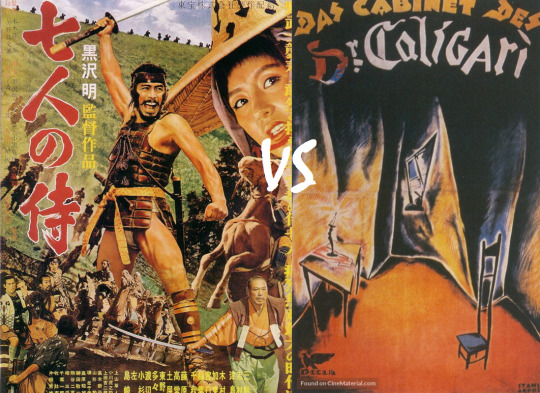
Seven Samourais:
What can even be said? Directed by the visionary Akira Kurosawa, who pioneered many of the most foundational filmmaking techniques used to this day. The film is exciting and compelling, every shot is art, and its legacy on the industry is yet to be overshadowed. It consistently makes top ten on ‘best films of all time’ lists to this day, rated the best foreign language film of all time by the BBC. All the actors are great, Toshiro Mifune is hot, the soundtrack by Fumio Hayasaka is iconic, and the film was technically magnificent for the time, with the techniques and effects frankly still blowing many modern blockbusters out of the water (ahem. marvel.) The film is also one of the most remade and reimagined films to date. Particularly of note is that The Magnificent Seven, one of the most famous films of all time (and criminally much more well-known than Seven Samurai) is explicitly a direct remake of Seven Samurai with the setting swapped. Frankly it’s no contest. All of Kurosawa’s films are brilliant, and were massively influential for their own reasons, but Seven Samurai is such a seminal piece of cinematic history that not including it would be nigh a crime.
Seven rōnin are hired to protect a village from bandits. This film has such a classic set-up and has been remade several times over (See: The Magnificent Seven, The Invincible Six, A Bug's Life honestly...). However, I personally think the original did it best. It's got the best action, the best characters (Toshiro Mifune my beloved), and just the best general direction. For a film that's over 3 hours, not a second of it feels wasted.
The Cabinet of Dr. Caligari:
Arguably the first TRUE horror film! The Cabinet of Dr. Caligari is a majorly influential German silent film from 1920, very easily streamed all over the place including YouTube! It had a tremendous impact on German and American cinema, especially in horror and later noir films, and featured fantastical elements of surrealism in its depictions and architecture that are incredibly endearing. The film is a tale of love, hypnotism, and murder. Fantastic plot twist for an early film, and Cesare is very very gender.
11 notes
·
View notes
Text
A Review of Blue Velvet (1986) with shared similarities to Ghost Dog: Way of the Samurai (1999)
By Cris Nyne
Blue Velvet is a film noir murder mystery that is both polarizing and captivating. The film is a product of surreal storyteller David Lynch and it begins in almost a dream sequence from the heart of the American dream that churns into the dirt within the first two minutes of it’s opening. Jeffrey Beaumont (Kyle MacLachlan) is home from college after his father has a stroke. While walking through a field, he finds a severed human ear that he brings to the home of detective John Williams. Jeffrey then strikes up a relationship with detective Williams’ daughter Sandy (Laura Dern). After some inside information from Sandy, Jeffrey begins to stalk jazz singer Dorothy Vallens (Isabella Rossellini) who is seemingly connected to the ear. Soon thereafter, he finds himself caught in the tumultuous world of a drug-fueled psychopathic sadomasochist gangster, Frank Booth (Dennis Hopper), who potentially has Dorothy’s husband and son.
youtube
The film is edgy, with lots of tense interactions and scenes filmed at night. The sexual violence perpetrated towards Dorothy from Frank made a lot of viewers uncomfortable and made for a very divisive film. Roger Ebert initially gave the film a one-star review, then followed that review with another take titled, “My Problem with Blue Velvet.”
“I am not one of the film's admirers. Or perhaps I should say, I admire its craftsmanship but am not one of its defenders. I believe Lynch is a talented director, and that in "Blue Velvet" he has used his talent in an unworthy way. The movie is powerful, challenging and made with great skill, and yet it made me feel pity for the actors who worked in it and anger at the director for taking liberties with them.” -Roger Ebert, “My Problem with Blue Velvet” October 1986
Isabella Rossellini defended her role and David Lynch in an interview with IndieWire. “I try not to read reviews. They’re always depressing. There’s always something that, even if [the review is] good, there is always one sentence that is negative and stays inside you forever. But I remember I was told that Roger Ebert said that [Lynch] exploited me, and I was surprised, because I was an adult. I was 31 or 32. I chose to play the character.” -Rossellini March 2024
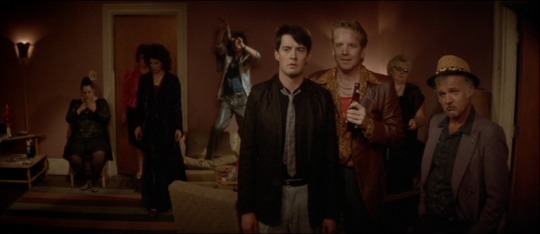
During the release of Blue Velvet, many important historical events took place during 1986, including the largest man-made disaster in history with the Chernobyl nuclear reactor meltdown. Ronald Reagan also confessed to illegal arms sale to Iran in what is now known as "The Iran-Contra Scandal."
Although the original reviews were mixed, today Blue Velvet has obtained cult status and is regarded as one of Lynch’s most important films. American Film institute lists the film at number eight in it’s all-time top ten mystery films. Lynch was nominated for an Oscar for Best Director. Blue Velvet was named Best Film at by Boston Society of Film Critics, Sitges (Catalonian Film Festival), Los Angeles Film Critics Association, New York Film Critics Circle Awards, and the National Society of Film Critics Awards. Dennis Hopper also pulled in numerous Best Supporting Actor awards, including the Montreal World Film Festival. Rotten Tomatoes gives Blue Velvet a 95% rating with critics and an 88% score with over 50,000 audience members. Blue Velvet had a budget of six million dollars and generated more than ten million at the box office. Although Lynch was becoming a well-known director with films like Eraserhead and Dune, the smaller budget, independent release and challenging storyline made the film more unconventional than mainstream.
Speaking of unconventional films, my choice for week seven was Jim Jarmusch’s Ghost Dog: Way of the Samurai (1999), featuring Forest Whitaker. Whitaker as Ghost Dog is a modern-day samurai who quotes Hagakure (a spiritual guide for warriors, first published in 1716), has a best friend that only speaks French- which he doesn’t understand a word of, and lives on a rooftop with his pigeons in a fictional city. Both movies take place in fictional locations. Blue Velvet is set in “Lumberton”, a cozy suburban logging town, but it was filmed in Wilmington, North Carolina, which is about 80 miles southeast of Lumberton, NC. They are not related. Ghost Dog: Way of the Samurai was primarily filmed in Jersey City, New Jersey, but the location is never mentioned in the film. Ghost Dog seems to be an amalgamation of cities from the northeast United States.
The main characters in both films are male, and their adversaries are gangsters. In Blue Velvet, Jeffrey (Kyle MacLachlan) finds himself in the grasp of psychonaut/psychopath Frank Booth (Dennis Hopper), the leader of a pack of misfits and miscreants. Their main objective is unclear, but drugs and violence are involved. Frank has the air of an extremely malevolent drug-fueled mob boss. In his role as Ghost Dog, Forest Whitaker is a hired hitman for Louie, an arm of a mob family. After a hired hit from Ghost Dog doesn’t go as planned due to an unexpected witness, the mob wants Louie to have Ghost Dog killed. Both main characters find themselves in the crosshairs of people whose business is violence.
Blue Velvet and Ghost Dog both were released by independent production companies (DeLaurentis and JVC, Le Studio Canal+, and BAC Films, respectively). I found it amusing that Lynch was born January 20th and Jarmusch January 22nd, seven years apart, but both auteurs were born under the artistic/philosopher sign of Aquarius. Both directors share the same contemporaneous timeline and have very distinctive styles. Although the film’s differences were noticeable, the similarities also reverberated throughout the film. Finding the similarities between two different genres of film has been an interesting lesson in critical thought. I would suggest both films for anyone not versed in the worlds of Lynch and Jarmusch.
2 notes
·
View notes
Text
In 1968, Bullitt careened onto the big screen with a sophisticated, gritty take on the police detective. Frank Bullitt lived in the same gritty world of Noirs and Neo-Noirs as The Seven Ups and The French Connection, full of crooked cops and hardened criminals.
Six years later, having missed the boat and passed up playing Dirty Harry, John Wayne set out to once and for all throw off the cowboy typecast for the third or forth time at this point. Doing so, he made the film McQ, a 1974 film that tried to find synthesis between Bullitt and Dirty Harry and yet somehow is only notable for being the first movie to feature the Ingram MAC-10.
In watching McQ, I realized the fact that Dirty Harry is less pro-police violence than it is rebellion against rule of the weak who refuse to get things done (though the explosion of urban crime was very real this also translates to ROE in Vietnam at the time and the American Malaise era in general), and the constitutional violations in Dirty Harry were simply a direct translation of this ethos of rebellion, even if the film did serve as copaganda. Dirty Harry, for all its inner conservatism, was a raw young film, and the police brutality within it was some sort of twisted "sticking it to the man."
McQ isn't fighting the man, he *IS* the man inasmuch as until he beats an unarmed man in the bathroom for a murder he didn't commit but certainly hadn't been arrested for. McQ's the Seattle PD's golden boy, and unlike Bullitt (SFPD's golden boy), his breach of the rules isn't that of a troublemaker getting the bad guys any way he can, it's a man who's always been in power curb stomping the hippies who question that power.
This is a soapbox movie. It's preaching to the audience and it's inelegant about it. Your fox news uncle has more subtlety. I've always been fine with whatever narrative artists decide to push, as long as they do so in a sophisticated manner, and McQ is simply not that. It's clunky, preachy, and basically pushes the audience's face in its politics. Considering John Wayne's own proclivities, that isn't surprising.
What is surprising is the ending of this film. Not so much in content, as it ends basically the way you think it will once all the twists have unwound, but rather in how engaging it is. Out of all the films from this period, I would have never pegged the preachy conservatism film to have arguably the most beautiful and visually striking ending scene out of all of them. But it does, and though McQ might not know how to couch a political agenda in sub/metatext, it knows how to end a crime thriller. And for that I'll credit it, despite John Wayne's clear desperation for both political and Hollywood relevance.
4 notes
·
View notes
Text

American Gigolo will be released on 4K Ultra HD and Blu-ray on June 18 via Arrow Video. Tommy Pocket designed the new cover art fort the 1980 neo-noir crime drama; the original poster is on the reverse side.
Paul Schrader (Taxi Driver, Hardcore) writes and directs. Richard Gere stars with Lauren Hutton, Bill Duke, Héctor Elizondo, Frances Bergen, and Carol Bruce.
American Gigolo has been newly remastered in 4K from the original negative with Dolby Vision and original mono, stereo and 5.1 audio options. A double-sided poster, six art cards, and a booklet are included.
Special features are listed below, where you can also see the full packaging.

Special features:
Audio commentary by film critic Adrian Martin (new)
Interview with writer-director Paul Schrader (new)
Interview with actor Héctor Elizondo (new)
Interview with actor Bill Duke (new)
Interview with editor Richard Halsey (new)
Interview with camera operator King Baggot (new)
Interview with music supervisor Dan Wilcox (new)
Interview with Professor Jennifer Clark on the fashion landscape of the '80s (new)
Original trailer
Image gallery
Also included:
Double-sided fold-out poster
6 postcard-sized art cards
Booklet featuring new writing by Neil Sinyard, an archival article by Bill Nichols, and original pressbook materials
In a world of wealth and desire, high-end male escort Julian Kay (Richard Gere) offers his love and attention to women in need. But when a client, the wife of a sadistic finance magnate, is found dead, all eyes turn to Julian as the prime suspect. Realizing he’s being framed, Julian races to prove his innocence, determined to unravel the mystery behind the setup. As he digs deeper into the case, he embarks on a journey that forces him to confront his own identity.
Pre-order American Gigolo.
#american gigolo#richard gere#paul schrader#80s movies#1980s movies#arrow video#tommy pocket#dvd#gift#lauren hutton#bill duke#hector elizondo#neo noir#crime film#crime drama
5 notes
·
View notes
Text
Happy Heavenly Birthday 🎂 ✨ 💓 To A Very Young Russian👱♂️ 🇷🇺 & Jewish✡ Born Inspiring & Brilliant Likeable Actor Who Was Gone Too Soon 🥺😭
Yelchin was born on March 11, 1989, in Leningrad, Russian SFSR, Soviet Union. His parents, Irina Korina and Viktor Yelchin, were pair figure skaters who were stars of the Leningrad Ice Ballet for 15 years. His family is Jewish, and were subjected to religious and political oppression in the Soviet Union. Yelchin said that his grandparents "suffered in ways [he] can't even begin to understand under Stalin".
Yelchin's family left for the United States in September 1989, when Anton was six months old, and were thereafter granted refugee status from the Department of State. His mother worked as a figure skating choreographer and his father as a figure skating coach, having been Sasha Cohen's first trainer. Yelchin's uncle is the children's author and painter Eugene Yelchin. In an article published in the Los Angeles Times in December 1989, Yelchin's mother stated, "A woman came up, saw Anton, and said, 'He's beautiful. He will be actor.'"
He was an American actor. Born in the Soviet Union to a Russian Jewish family, he immigrated to the United States with his parents at the age of 6 months. He began his career as a child actor, appearing as the lead of the mystery drama film Hearts in Atlantis (2001) and a series regular on the Showtime comedy-drama Huff (2004–2006). In 2006, he starred in Alpha Dog with Bruce Willis, Justin Timberlake, and Emile Hirsch. Yelchin landed higher-profile film roles in 2009, portraying Lieutenant Pavel Chekov in the Star Trek reboot and Kyle Reese in Terminator Salvation. He reprised his role as Chekov in the sequels Star Trek Into Darkness (2013) and Star Trek Beyond (2016).
Yelchin frequently worked on independent and lower-profile films, headlining the romantic drama Like Crazy (2011), the 2011 remake of Fright Night, the supernatural thriller Odd Thomas (2013), the romance 5 to 7 (2014), the horror comedy Burying the Ex (2014), the neo-noir The Driftless Area (2015), and the horror thriller Green Room (2015). As a voice actor, he voiced Clumsy Smurf in the live-action Smurfs films (2011–2013) and lead role James "Jim" Lake Jr. on the Netflix animated series Trollhunters: Tales of Arcadia (2016–2018).
He maintained an active career until his accidental death in 2016 when he was fatally injured by his SUV.
He was 27 Years Old
Today Would Be His 35th Birthday 🎂 💕
Please Wish This Young & Incredible Russian👱♂️ 🇷🇺 & Jewish ✡ Born Actor A Very Happy Birthday 🎂 In Heaven ☁️
WE ALL LOVE HIM
WE SEEN HIM ON THE BIG SCREEN IN SPACE, THE FINAL FRONTIER & IN A APOCALYPTIC FUTURE RUN BY MACHINES & HE WAS A HIGH SCHOOL 🏫 KID CHOSEN TO BECOME A KNIGHT FOR TROLLS IN A DREAMWORKS ANIMATED TV SERIES 📺 BEFORE HIS UNTIMELY PASSING 🥺
& WE MISS HIM ALL VERY MUCH 😢
THE 1 & ALWAYS
MR. ANTON VIKTOROVICH YELCHIN AKA ANTON YELCHIN👱♂️🇷🇺✡ AKA PAVEL CHEKOV OF STAR TREK 🌟 🚀👨🚀🌌🌠 (2009) & YOUNG KYLE REESE OF TERMINATOR SALVATION 🤖
HAPPY 35TH BIRTHDAY 🎂 IN HEAVEN ☁️🥺😭😇
WE LOVE YOU & WE MISS YOU ALWAYS. UNTIL NEXT TIME. REST IN PEACE ✌ 🙏 😔. ANTON 👱♂️🇷🇺✡

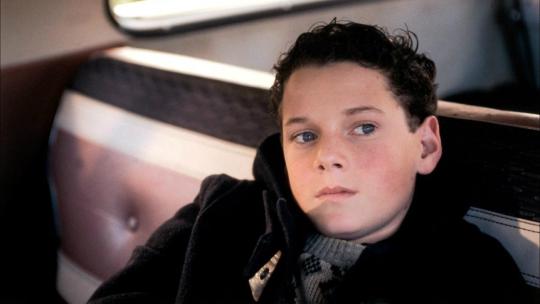

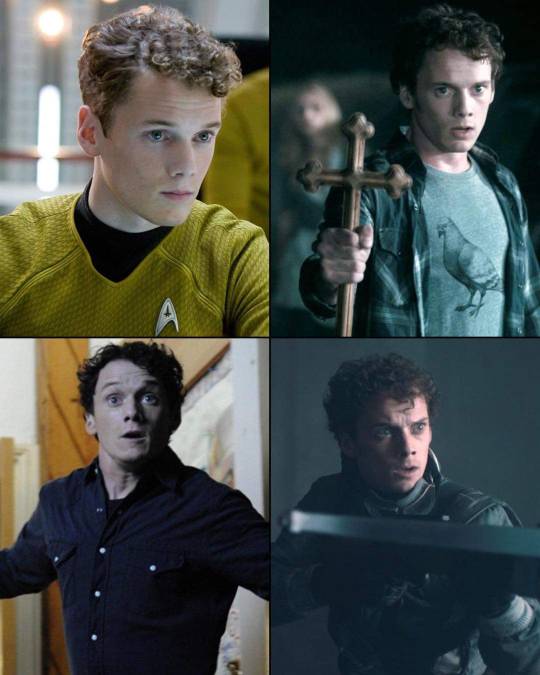
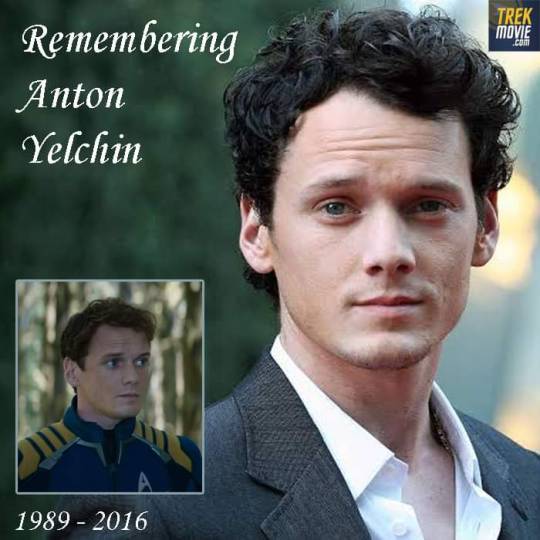


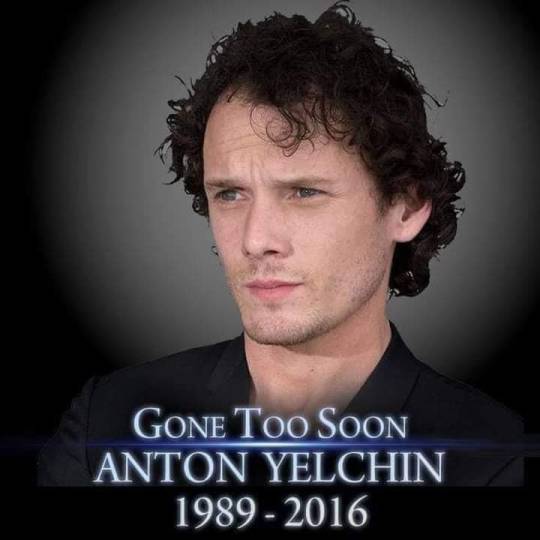

#AntonYelchin #StarTrekTrilogy #TerminatorSalavtion #OddThomas #TrollHuntersTalesOfArcadia
#Anton Yelchin#Star Trek Trilogy#Terminator Salvation#Odd Thomas#Trollhunters Tales of Arcadia#RIP Anton#Spotify
3 notes
·
View notes
Text
research 1
Frank Miller
works


Frank Miller is a very well known as an American comic book artist, writer and film director. He has worked on many graphic novels such as Daredevil (1964-2023), and subsequent Daredevil: BornAgain, The Dark Knight Returns, Batman: Year One, Sin City, and 300. He became a professional comic book artist in his teens, working on Spectacular Spider-man and for big companies such as DC, Marvel and Goldkey.
'The Sin City books have garnered numerous awards, including two Harvey awards for Best Graphic Album of Original Work in 1998 and Best Continuing Series in 1996; and six Eisner Awards, including those for Best Writer/Artist, Best Graphic Novel Reprint, Best Cartoonist, Best Cover Artist, Best Limited Series and Best Short Story. In 2015, Miller was inducted Will Eisner Award Hall of Fame for his lifetime of contributions to the industry.' Frank Miller – The Art of Frank Miller (frankmillerink.com)
he is know as one of the best and most rewarded comic artists in the industry of his time.
art style and use of colour
Miller's style is described as being a combination of film noir and manga, with him saying that "I realised when I started Sin City that I found American and English comics be too wordy, too constipated, and Japanese comics to be too empty. So I was attempting to do a hybrid." Frank Miller: comics to kill for | Dazed (archive.org)
his work is inspired by Neal Adams and authors like Jack Kirby, Frank Frazetta, Will Eisner and Hugo Pratt. He has a love for the noir genre, ad this influenced his runs of Daredevil which he took over as writer and penciller for. This made the series become noticeably darker and more realistic.
Miller re-wrote the origin story of Matt Murdock and was inspired by the narrative techniques used in Japanese manga, especially the storytelling of Lone Wolf and Cub.


his style was seen to sometimes spill over into charicature, particularly in Batman: The Dark Knight Returns.

When drawing for Sin City, he pushed his style further with the pages being entirely black and white except for bright solid colours such as yellow or blue being used to drive the story.


Overall, his style is known to be very dark, intense and gritty. his colours are usually very dulled, and shadows are solid black. I personally like this technique, its seen very often in comic work, and with Miller's works he uses it very well and the shadows compliment the dark atmospheres of his comics. Miller is very skilled in shadow placement, he is able to carve shadows and lights to create shapes that show the textures and features of objects with little detail. He often also uses sharp crosshatching techniques to add to the darkness of his style.
What makes their work unique from the others?

his work is unique for his noticeable influence of film noir, and his work is very dramatic and strategically harsh.
What techniques or stylistic touches could you use in your work?
his harsh shading style and crosshatching colouring techniques are very effective in creating a heavy and anxious atmosphere, so i could possibly take some of these touches into consideration when creating my page. additionally, i like the technique of having a completely black and white panel be contrasted with harsh bright colours to create emotion and draw attention.
0 notes
Text
[ad_1] The last couple of years have seen a huge rise in browser-based puzzle games, tasking players with working out a certain kind of answer using limited guesses. Framed is one of the newest, following in the footsteps of Wordle, but offering a slightly different twist. You’ll still need to work out the answer using limited information and only six tries, but it’ll be movies that you’ll be guessing. You see, Framed focuses on individual frames, or stills, of an ever-changing roster of movies. Some show a fair amount of action at the start, while others will take careful analysis and decent trivia knowledge to crack. With each wrong guess, a new still is revealed, hopefully adding enough extra information and context for you to guess the correct movie title. With only six guesses at your disposal, you may need a little help guessing today’s Framed answer. To give you a hint, we’ve included some clues that will tease the title of the movie picked as today’s puzzle. If you’ve already failed today’s puzzle, or would just like to know the answer, we’ve detailed that as well. Framed hint for today Today’s puzzle is an American neo-noir erotic thriller film. Released in 1995 Directed by Martin Campbell Stars Pierce Brosnan, Sean Bean, Famke Janssen Framed answer for today (February 4) The answer for Framed today is GoldenEye. This is the answer for February 4 with a brand new puzzle tomorrow. Check back in if you need any help! How to play Framed To play Framed you just need to follow these steps, in your browser of choice. Note that any Framed versions you find elsewhere on app stores or other storefronts are likely to be fakes. Go into your browser and visit framed.wtf Take a look at the still for today Make a guess, if it’s correct, you will see the rewards screen If incorrect, you have five more chances, each showing a new still. Previous Framed answers Sometimes, when trying to solve the Framed puzzle of the day, it can be extremely advantageous to know previous answers. Here are the answers from the last few days. Basic Instinct Step Brothers Little Miss Sunshine Sin City Jarhead Fast & Furious 6 Lost In Translation Coraline I, Robot Finding Nemo The English Patient Marathon Man Heat The American Forrest Gump Ex Machina Indiana Jones and the Temple of Doom The Iron Giant The Aviator Flash Gordon Batman v Superman: Dawn Of Justice In Time Face/Off Cake Alien The Royal Tenenbaums My Neighbour Totoro Due Date Nightcrawler Billy Elliot Vertigo Lady Bird Manchester By The Sea Top Gun 300: Rise Of An Empire Harry Potter And The Goblet Of Fire Home Alone Shazam Babe The Polar Express Elf Die Hard It’s A Wonderful Life Inside Out In Bruges The Purge Argo Mean Girls Batman Returns Side Effects Chicago Dumb And Dumber To Any Given Sunday The Nightmare Before Christmas House of Flying Daggers Black Widow Manhattan The Great Gatsby Bend It Like Beckham Australia Chef About A Boy There Will Be Blood Cars The Da Vinci Code Drive Warcraft Hocus Pocus Pain & Gain Koyaanisqatsi Mamma Mia The Hateful Eight Paul Wayne’s World Willy Wonka and the Chocolate Factory The Shape of Water Quantum Of Solace The Princess Bride The Hunchback of Notre Dame Cool Hand Luke Ted 21 Jump Street The Sound Of Music Moneyball The Hunger Games Rogue One: A Star Wars Story Ferris Bueller’s Day Off Iron Man Men In Black Gravity The Mask Escape From Alcatraz Gladiator Hugo Ghostbusters Halloween 2 Frankenstein The Hangover The Muppets Annie Bronson The Amazing Spider-Man A Nightmare On Elm Street Marriage Story The Thing Grease Frozen Amistad Saw Armageddon Memento Anaconda The Incredibles Fast Times At Richmond High Austin Powers: International Man Of Mystery The World’s End Chariots Of Fire A Few Good Men Perriort Le Fou Zoolander The Tree Of Life Chitty Chitty Bang Bang Juno Harry Potter and the Chamber of Secrets Dunkirk The Matrix School Of Rock Fantastic Mr. Fox Ad Astra American Hustle Tropic Thunder Casino Royale Caddyshack Dredd Fantasia Sicario
RoboCop I Am Legend Deadpool Cool Runnings 2001: A Space Odyssey Monty Python’s Life Of Brian A Beautiful Mind Titanic Beverly Hills Cop Air Force One King Kong Rocky The Theory of Everything The Gentlemen Now You See Me The Notebook Dead Poets Society Captain Phillips Aladdin When Harry Met Sally The Mummy The Martian Hero The Secret Life Of Walter Mitty La La Land Braveheart The Revenant Who Framed Roger Rabbit Slumdog Millionaire Crouching Tiger, Hidden Dragon Mud The Lego Movie Gremlins The King’s Speech Mrs. Doubtfire Moulin Rouge! The Hurt Locker Galaxy Quest Armadeus Free Solo The Goonies Black Swan The Social Network Talladega Nights: The Ballad Of Ricky Bobby Sleepless In Seattle Thor: Ragnarok Arrival Jojo Rabbit Her The Big Short The Breakfast Club Sunset Boulevard Notting Hill We’re The Millers Rango Knives Out Catch Me If You Can The Shining 12 Years a Slave Fruitvale Station Monty Python and the Holy Grail The Dark Knight Whiplash Seven Baby Driver Into the Wild The Cabin In The Woods Color Out of Space The Grand Budapest Hotel Saving Private Ryan Zodiac Back to the Future Minari Uncut Gems Bad Boys II Interstellar Up American Psycho Bad Education Howl’s Moving Castle Inglorious Basterds The Godfather. Apocalypse Now Children of Men Big Hero 6 The Proposal Parasite Crazy Rich Asians Soul 28 Days Later About Time Birds of Prey (or Harley Quinn: Birds of Prey) The Lighthouse Kong: Skull Island Joker Eyes Wide Shut Bird Box Isle of Dogs Midsommar Goodwill Hunting 10 Cloverfield Lane Indiana Jones and the Last Crusade Moonlight Guardians of the Galaxy Requiem For a Dream Les Miserables No Country For Old Men 1917 The Imitation Game Godzilla: King of the Monsters The Godfather Pt II Brokeback Mountain The Truman Show Dawn of the Planet of the Apes Inception 300 Alien Resurrection District 9 A Quiet Place Birdman WALL-E Gone Girl BlacKkKlansman Jackie Brown Pineapple Express Hereditary Pan’s Labyrinth A Fist Full of Dollars One Hour Photo Schindler’s List The Exorcist Bladerunner 2049 Back to the Future Part II Black Panther Shutter Island O’ Brother Where Art Thou? The Witch Django Unchained That’s all you need to know about Framed, and the answer for today. For more puzzle-game goodness, check out our hints for today’s Heardle. !function(f,b,e,v,n,t,s) if(f.fbq)return;n=f.fbq=function()n.callMethod? n.callMethod.apply(n,arguments):n.queue.push(arguments); if(!f._fbq)f._fbq=n;n.push=n;n.loaded=!0;n.version='2.0'; n.queue=[];t=b.createElement(e);t.async=!0; t.src=v;s=b.getElementsByTagName(e)[0]; s.parentNode.insertBefore(t,s)(window, document,'script', 'https://connect.facebook.net/en_US/fbevents.js'); fbq('consent', 'revoke'); fbq('init', '2300206660218433'); fbq('track', 'PageView'); fbq('init', '370979561341328'); fbq('track', 'PageView'); [ad_2] Source link
0 notes
Text
WIP Wednesday
I was tagged by @faerieavalon, thanks friend. Tagging forward to @thesaltyhealer, @johaeryslavellan, @lethendralis-paints, and @tryvyalsynnes if you’re interested.
I’ve got a bunch of random crap that may or may not turn into anything (probably not). Here you go, random crap. I haven’t been feeling great lately, but it’s good to know that I’m still writing. A lot. It’s random shit, but it’s still writing, so that’s something I guess.
One.
Unfortunately, now I must find a new meaning for myself without you or a calamity to guide me. I no longer know who I am, amatus. I cannot go back to who I was before we met; you have changed me in so many wonderful ways. I am free to trust, to stand proud against my father, to fight for justice, to admit I was wrong, to learn from my mistakes. Knowing you, loving you, has made me stronger than I ever could have been alone. However, I still feel as though I am not yet the man I must become. My country needs a miracle. That the entire mess was the doing of my people, ancient and otherwise, was a blow.
Two.
“No,” she laughed, brushing a curl off her nose. “I should think not. We have plans tonight, Dorian. You’ll never guess who I just ran into!”
He sighed, rolling his eyes. “Unless it’s someone who will grade these papers for me and write a couple of grants, I’m afraid the only plans I have for the evening are take-out and a date with this pen.” He twirled the ballpoint between his fingers.
Three.
Anders was smiling. Dorian couldn’t help himself; he bent over, kissing him, both men sighing with pleasure. Avoiding thoughts of the future had become their solace; they had both decided simultaneously and wordlessly that they would squeeze every moment of happiness out of the present before their lives fell to pieces.
Four.
Her brow furrowed, searching for a memory that wasn’t tinged with sadness. “In truth, the things that hold the most weight in my mind are those that caused me the most grief. The contented ones were all shoved away. I had thought it better to believe that only sorrow existed, more fuel to add to the flames. It allowed me to function. The juxtaposition of what was with what could have been… It always hurt too much.”
Five.
They were supposed to be learning about the history of the Circles, but Anders had fallen asleep again. He hadn’t been resting properly at night since the Templars had brought him back, carted him in front of Irving and Gregiore; his lessons were the only place he could sleep these days. There were plenty of people about, the rooms were well-lit, and the enchanters droned endlessly. In essence, classes were the perfect draught; they set Anders right to sleep without fail.
Six.
Fog descends over the dusty city as the small man behind the desk rolls a cigar. Red hair, red jacket, red chair. The shade stands out against the general darkness of the room; it feels like all the other colors had simply given up and walked out leaving only vibrant reds and dull grays.
The man pulls a lighter from his breast pocket, and the red flame casts his face in shadow, just for a moment. The end of his cigar catches alight and he sighs, leaning back. He offers a drag to the person facing him, but their refusal suits him just fine.
“It’s been a long time since anyone has had much in the way of hope around here. Kirkwall is a pit, it’s true, but sometimes you just find a whole and think to yourself, well, if I die here, at least nobody’ll have to start digging.
“The name’s Tethras. I’m something of a storyteller, those these days nobody is much in the mood for stories. But I’d like to think that once we stop telling them, that’s when life has ground us all down into such tiny pieces that there’s nothing left to salvage. Floating through the air like motes of dust.
“So, I’ll keep talking, as long as you’re listening, friend. I’m just a bit player in this story, but I know enough to tell you that it’s one worth sticking around for. Gets better with every telling.”
#dorian pavus#anders#varric tethras#lyanna lavellan#seron lavellan#dorian in 3 AUs#anders in 2#lyanna in 2#yes that's theoretical physics professor dorian in two#and six is american film noir
10 notes
·
View notes
Note
television & film ask game: 2. 8. 12. 21. 32.
Thanks so much for the asks!
2. Favourite television show from the early 2000′s?
The Sopranos. Runner ups are Arrested Development and Six Feet Under
8. Favourite television soundtrack?
Hmmm... I am terrible at paying attention to music and soundtracks. But, I would say The Americans. Runner up would be The Leftovers
12. Best cliff-hanger?
I’m gonna answer this for TV, cause it’s a medium that lends itself more to cliffhangers, and I’m gonna list a few. I would say the season 1 finale of The Good Place, Ava shooting Boyd and taking off with the money in season 6 of Justified, the revelation that Evie and her friends joined the Guilty Remnant in the Leftovers Season 2, Cooper being possessed by BOB in the Twin Peaks season 2 finale, and Kendall turning on his father in the Season 2 finale of Succession.
21. A show that you started watching but then stopped? What was the reason?
Ozark. I only watched five or six episodes of the first season. I quit because I found it empty and soulless. They never gave me a reason to care about any of the characters, especially Jason Bateman’s protagonist. Worse, with the exception of Julia Garner’s character, I didn’t find any of the characters interesting.
32. Favourite movie villian?
I don’t know if it counts because she’s also the protagonist, but Bridget Gregory in The Last Seduction.
#about me#Anonymous#ask#my posts#ablogthatishenceforthmine#The Sopranos#Arrested Development#six feet under#the americans#the leftovers#tgp#the good place#film noir#justified#ava crowder#dale cooper#twin peaks#sad boi#kendall roy#succession#ozark#the last seduction
2 notes
·
View notes
Note
Speaking of Tod Slaughter... any thoughts on Grand Guignol theater..?
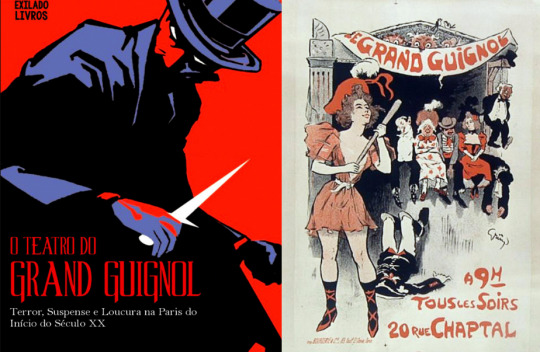
Looking back on it, the first time I encountered the term Grand-Guignol was also the first time I looked at Fantomas, when I picked up the book above titled The Theater of Grand Guignol, which is all too fitting as Fantomas is Grand-Guignol to it's core. It's also a term that I've seen applied a couple of times to The Spider as well as some darker fan reinterpretations of Batman. Like film noir and sword-and-sorcery, it's a term for a type of storytelling that's associated with dime novels and pulps, influenced and was influenced by them in return, but isn't really the same thing and is, in fact, a separate "genre" (not quite the right term).
Indeed, if the common cultural association of pulp is that of something trashy and violent and darker than it's contemporary culture, one can see Grand-Guignol as perhaps the darkest of it's adjecent family, the Dario Argento to pulp's John Carpenter, the cracked mirror to all that exists.
Short and full-length plays were based on the hot topics unseen onstage at this extent before, from graphic scenes of murders, tortures, sexual violence to psychological thrills like resurrections of the dead, incest, suicide, characters being hypnotized, trapped or guilty of their loved one’s deaths. In most cases, it was a combination of several of those themes in one piece, which of course, multiplied shows’ popularity - AngryFishTheatre's article
‘At one performance, six people passed out when an actress, whose eyeball was just gouged out, re-entered the stage, revealing a gooey, blood-encrusted hole in her skull. Backstage, the actors themselves calculated their success according to the evening’s faintings. During one play that ended with a realistic blood transfusion, a record was set: fifteen playgoers had lost consciousness. Between sketches, the cobble-stoned alley outside the theatre was frequented by hyperventilating couples and vomiting individuals.’
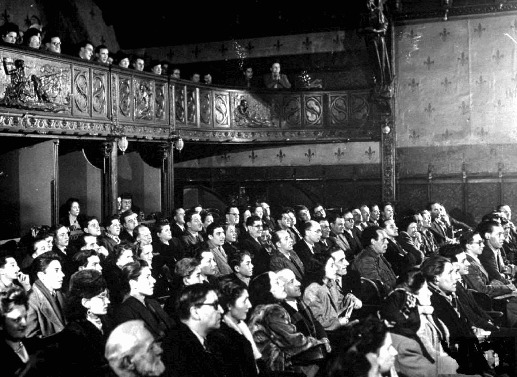
Despite of its scandalous nature, for France Grand Guignol was more than a theatre: it was a tradition, an institution, and an attraction like the Eiffel Tower or the Folies Bergères, and Maxim’s... It was then highly fashionable. Celebrities of the day, South American millionaires and errant royalty went there assiduously to be scared out of their wits.
Going to the Grand-Guignol was less a social act than a private one and certain audience members preferred not to be seen. Some witnesses reported that the iron-grilled boxes in the back of the theater encouraged a certain ‘extremism.’
The cleaning staff would often find the seats stained - — Mel Gordon, The Grand Guignol: theatre of fear and terror.
It lasted almost the exact same time period as the American pulp era (from the late 1880s to 1950s), and even in it's origin, as the theater itself was built out of the ruins of a church, and it would attain fame and legacy as the shadow opposite to Moulin Rouge's glamour and spectacle. It's original intent on being focused on naturalistic theater led to breakthroughs of horror that made it the whole selling point, and much like the pulp lords of terror I talk about, their staged and spectacled terrors were still no match for the horrors of reality that followed.
“We could never equal Buchenwald,” the Grand Guignol’s final director, Charles Nonon, told TIME magazine that year. “Before the war, everyone felt that what was happening onstage was impossible. Now we know that these things, and worse, are possible in reality.”
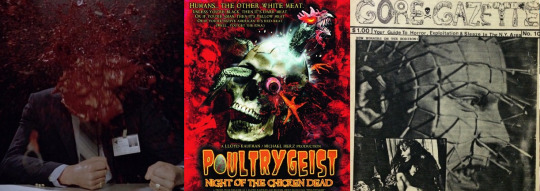
And of course it goes without saying that the Grand-Guignol's influence on storytellers long transcended it's original lifespan. Gore for gore's sake is hardly something I enjoy, but I've definitely enjoyed many, many films that reached to extremes of horror and violence and gore for horror and comedy alike. I would not claim the Grand-Guignol started this because I could very well be missing out on something, but they are undeniably a huge part of the history of horror as we know it, along with the German Expressionist works of the 1910s that were as well both inspired by, as well as influential, on the Grand-Guignol.
Time and time again we see the pattern emerge, of creators or outlets or mediums that emerge as cheaper and less critically-reputable alternatives to the mainstream attain extraordinary and influential success both in their circles as well as those who would never admit to looking at them for inspiration otherwise. In fact, you could very well argue that it’s alive not just through films and comics and so forth, but in newfound forms of media created by people with all the freedom to put together whatever their imaginations and limited resources and lack of restraints can create.
Like Youtube Poop.
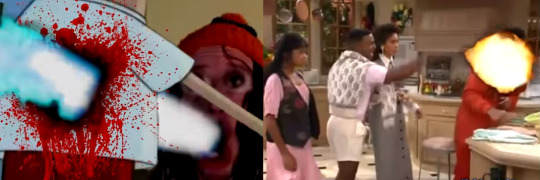
Now maybe I'm biased here because I grew up with YTP, but really, the main intent behind every YTP is to twist the media it's using to provoke a new reaction from you, every YTP is varying levels of a rollercoaster of jokes and edits and little narratives stacking up and flowing together, references and poop jokes and murder jokes and slurs and parody and criticism and SuS and literally anything the creator thinks is gonna get a reaction that wasn't in the original material. And it doesn't even have to be exclusively about jokes, there's a lot of YTPs that are centered on horror or drama or even are just completely original narratives using the assets at hand, sometimes even clocking in at almost movie-length.
There's no filter or censors or teams making sure it's tested to the audience, it's just as much chaos as someone with video editing skills can manage to create, and more so than anything else nowadays, it's the medium that abides and amplifies the same principle that ruled and defined Grand-Guignol: "The Hot and Cold Shower"
Grand Guignol, was not the inventor of this concept, but probably the first performing arts company that used it as its main programming principle. Every evening at the theatre was programmed with plays heavily contrasting in their nature. In the 6 plays presented on a regular night, every 2 horror plays were followed by a light comedy and the light comedy by another horror play or two. Using this contrast the creators aimed to give their audiences a fuller range of emotions. They called it a "hot and cold shower".
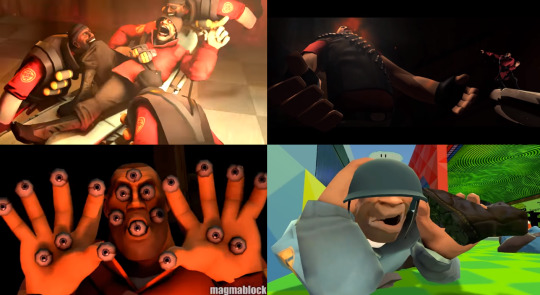
You could also make a similar argument for creators that used Garry's Mod or Source Filmmaker to create Youtube content, many of whom either followed the styles of YTP or created their own which ended up influencing others in return, and you can definitely see how YTP as well as these have influenced our current generation's taste in comedy as well as the editing styles of many prominent creators. It even seemed for quite a while that GMOD and SFM content of this type was dead, but it definitely seems like it's gotten a revival recently, and really just never went away. Likewise, a lot of people think YTP died circa 2012 or 2015, which is completely false, it just changed a bit, as things tend to do if they are to stick around.
The entire approach of extreme hot and cold, extreme horror and comedy shuffling per second and extreme absurdity overriding is something you definitely get nowadays a lot more out of these newer forms of media than anything that film and television's capable of giving, and just as Grand-Guignol started out relatively ordinary (focused mainly on naturalistic horror) before it completely spiraled into a perpetual race for excess, we've gotten so desensitized so quickly to surprises that you can see in real time the growing needs for content that's faster and more chaotic and funnier and more dramatic and more absurd and more well-produced but also worse produced and, yeah.
I definitely wonder how we may see future filmmakers and cartoonists and creators be influenced by, not just the above, but also the rapidly changing landscapes of meme culture and social media and the gradually less-funny theater of the absurd that reality's become. I definitely imagine we'll be in for some interesting times.
Y'know, if we make it that far.
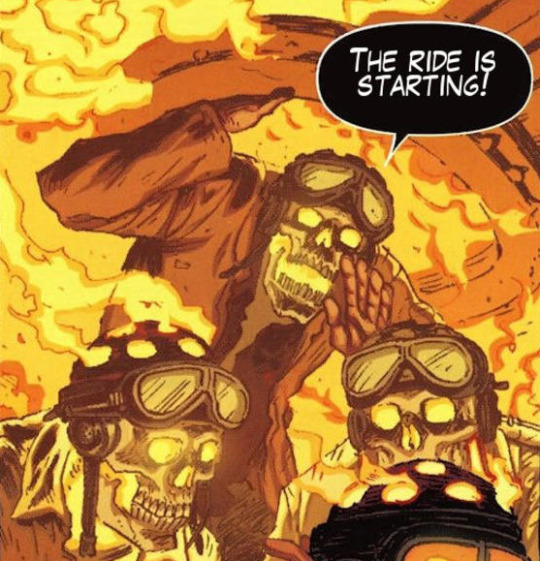
Alternatively you could also argue Jackass is also a modern Grand Guignol and they just cut out the narrative middleman to get straight to the "people getting fucked up for your amusement" part, but at this point I'd just be inviting a retread of all the "Is -X- pulp" questions I got for "Is -X- Grand Guignol", and I may have stepped straight into a rake with this one.
#replies tag#grand guignol#fantomas#pulp fiction#tf2#team fortress 2#poultrygeist#youtube poop#ytp#sus
45 notes
·
View notes
Photo
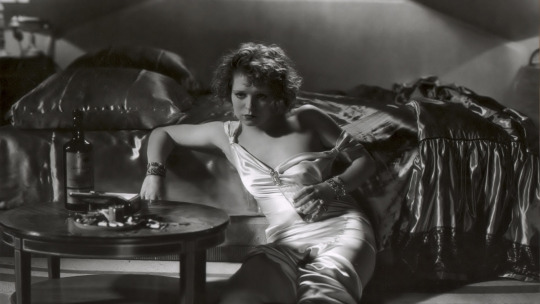
Savage Cinema.
From anarchists and adultery to milk baths and massacres, Matthew Turner shares five of the weirdest and wildest highlights of Hollywood’s pre-Code era, as #PreCodeApril comes to a close.
Pre-Code April was directly inspired by Noirvember, a month-long celebration of noir cinema instigated by Marya Gates (Oldfilmsflicker). I did Noirvember for the first time in November 2019, really enjoyed it, and thought it would be great to do the same thing for pre-Code movies. Although I’ve watched most of the classic 1930s films, I realised there were a huge number of pre-Code films I’d never seen (of my Letterboxd list of over 900 Pre-Code films, I have only seen 200).
As a sucker for a bit of wordplay, no matter how tenuous, I picked April partly because it’s six months away from Noirvember and partly because of the shared “pr” sound in April and Pre-Code. I’ve been absolutely delighted by the response—the #PreCodeApril hashtag on Twitter is a daily treasure trove of pre-Code-related joy, but I was genuinely thrilled to see the response on Letterboxd (here is my watchlist for the month). It’s been a real pleasure to see pre-Code movies constantly popping up in my ‘new from friends’ feed. My hope is that it’ll be even bigger next year—and that maybe TCM will want to get involved, the way they do with Noirvember.
Produced between 1929 and 1934, pre-Code cinema refers to films made in a brief period between the silent era, and Hollywood beginning to enforce the Motion Picture Production Code censorship guidelines (mandatory enforcement came in from July 1934). The “Code” in question was popularly known as the Hays Code, after then MPPDA president Will H. Hays. As the depression set in and box office declined, theater owners needed fare that would drive cinema-goers to the movies. It was a wild time to be a scriptwriter; they threw everything at the page, designers added even more, and actors played out the kinds of scenes, from the suggestive to the overt, that would otherwise be banned for decades to come.
The following five films demonstrate some of Hollywood’s craziest pre-Code excesses. They’re still jaw-dropping, even by today’s standards, and notably give female characters an agency that would be later denied as the Christian morals of the Code overruled writers’ kinks.

Madam Satan (1930) Directed by Cecil B. DeMille, written by Elsie Janis, Jeanie Macpherson and Gladys Unger
A critical and commercial flop in 1930, Cecil B. DeMille’s utterly insane musical comedy stars Kay Johnson as a straight-laced wife who plots to win back her unfaithful husband (Reginald Denny) by seducing him at a costume party, disguised as a mysterious devil woman. The location of this party? Oh, nothing too fancy, just on board a giant zeppelin. (“Madam Satan or: How the Film gets Fucking Crazy on the Blimp,” as Ryan reviewed it.)
Madam Satan is not by any stretch of the imagination a good movie (the editing alone is laughably bad), but as a piece of pre-Code craziness, it really has to be seen to be believed. Co-written by a trio of women and set in just three locations, it goes from racy bedroom farce to avant-garde musical to full-on disaster movie after a bolt of lightning hits the blimp.
The film is justly celebrated (in camp classic circles, at least) for the wildly over-the-top costumes paraded in the masquerade ball sequence, but there’s weird outfit joy everywhere you look. Keep an eye out for an enterprising extra who’s come dressed as a set of triplets.
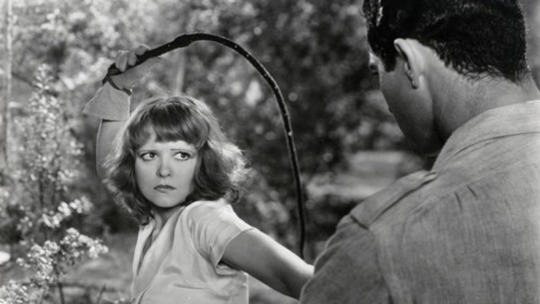
Call Her Savage (1932) Directed by John Francis Dillon, written by Tiffany Thayer and Edwin J. Burke
Adapted from a salacious novel by Tiffany Thayer, Call Her Savage was former silent star Clara Bow’s second-to-last film before her retirement at the age of 28. She plays Texas gal Nasa Springer, who’s always had a “savage” temper she can’t explain. In the space of 88 minutes she goes from wild teenager to jilted newlywed to young mother to prostitute to wealthy society girl to alcoholic before finally (it’s implied) settling down with her Native-American friend after discovering that she’s half-Native-American, something the audience has known all along.
Bow’s performance is frankly astonishing, to the point where you simply can’t believe what you’re seeing from one moment to the next. Sample scenes see her savagely whipping both a snake and her Indian friend, smashing a guitar over a musician’s head and violently wrestling her Great Dane… and that’s all in the first five minutes. She’s also frequently in a state of near undress throughout—one funny scene has her maids chasing her with a dressing gown because they’re afraid she’ll run down the street in her négligée.
The rest of the film includes alcohol, adultery, strong violence, attempted rape, murder, syphilis (not named, but heavily implied) and baby death. It’s a veritable smorgasbord of outrageous content and Bow is pure dynamite throughout. The film is also noted for being one of the first on-screen portrayals of homosexuality, when Nasa visits a gay bar in the Village frequented by “wild poets and anarchists”.

Smarty (1934) Directed by Robert Florey, written by Carl Erickson and F. Hugh Herbert
This deeply problematic sex comedy features pre-Code stars Joan Blondell and Warren William (often nicknamed ‘The King of Pre-Code’) at their absolute filthiest. Blondell plays Vicki, a capricious, happily married wife who gets an obvious kick out of taunting her husband, Tony (William). When he cracks and slaps her at a party, she divorces him and marries her lawyer, Vernon (Edward Everett Horton), whom she also goads into slapping her in a deliberate ploy to win back Tony.
Essentially, Smarty hinges on Vicki liking rough sex and it’s completely blatant about it, ending with her sighing “Hit me again” (the film’s UK title!) as they sink into a clinch on a couch, a rapturous expression on her face. It’s a controversial film because on the surface it looks like it’s condoning domestic violence, but it’s very clearly about Vicki’s openly expressed sexual desires—she wants to be punished and dominated, she just has a rather dodgy way of getting what she wants.
It might be unsophisticated, but in some ways Smarty is remarkably ahead of its time and ripe for rediscovery. To that end, it would make a fascinating double bill with Stephen Shainberg’s Secretary (2002). Oh, and it’s also chock-full of lingerie scenes (like most pre-Code films), if you like that sort of thing.

Massacre (1934) Directed by Alan Crosland, written by Sheridan Gibney, Ralph Block and Robert Gessner
Several pre-Code films (notably those made by Warner Bros) took a no-punches-pulled approach to their depiction of social issues, and star Richard Barthelmess actively sought out such projects. Here he plays Joe Thunderhorse, a Native American who’s become famous on the rodeo circuit. When he returns to his tribe to bury his father, he ends up fighting for their rights, taking on corrupt government officials and religious authorities.
Massacre is fascinating because on the one hand it’s wildly insensitive—Barthelmess and co-star Ann Dvorak are both cast as Native Americans—but on the other, it burns with a righteous fury and does more than any other Hollywood film (before or since) to champion the rights and highlight the injustices dealt out to Native Americans. That fury is encapsulated in a horrifying and rightly upsetting rape scene (it happens off-screen, but the cuts leave you in no doubt) that the film handles with surprising sensitivity.
In addition to being a passionate fight against racism and social injustice, the film also has some genuinely shocking sexual content. Most notably, Joe is seen making love to a rich white woman (Claire Dodd, who’s also in Smarty) who has an obvious sexual fetish, flaunting him in front of her friends and making a shrine in her room with Native-American paraphernalia.
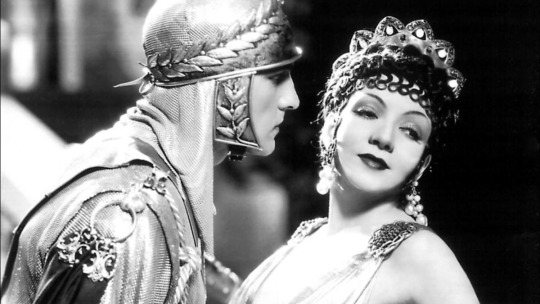
The Sign of the Cross (1932) Directed by Cecil B. DeMille, written by Waldemar Young and Sidney Buchman
Yes, this is Cecil B. DeMille again, but no list of weird and wild pre-Code films would be complete without the jaw-dropping ancient Rome epic, The Sign of the Cross. Adapted from an 1895 play by Wilson Barrett, it stars Frederic March as Marcus Superbus (stop sniggering at the back there), who’s torn between his loyalty to Emperor Nero (Charles Laughton) and his love for a Christian woman (Elissa Landi), while also fending off the advances of the Emperor’s wife, Poppaea (Claudette Colbert).
The film is racy enough in its sexual content alone: highlights include the famous scene of Claudette Colbert taking a nude milk bath and an erotic “lesbian” dance sequence, where Joyzelle Joyner’s “most wicked and talented woman in Rome” does ‘The Dance of the Naked Moon’ at Frederic March’s orgy, trying to tempt Landi’s virtuous Christian, to the obvious arousal of the gathered guests.
However, it’s the climactic gladiatorial-arena sequence that will leave your jaw on the floor. Lasting around twelve minutes, it includes: someone getting eaten by a tiger, a tied-up, naked women being approached by hungry crocodiles, pygmies getting chopped up by female barbarians, elephants stomping on heads, a gorilla approaching a naked woman tied to a stake, a man getting gored by a bull, and gladiators fighting to the death, complete with blood and gory injury detail.
The whole thing is genuinely horrifying, even for 2021. Best of all, DeMille pointedly critiques the audience (ourselves included), by showing a series of reaction shots ranging from intense enjoyment to abject seen-it-all-before boredom.
Matthew Turner (FilmFan1971) is a critic, author, podcaster and lifelong film fanatic. His favorite film is ‘Vertigo’. The films in this article are also listed here: Five of the Pre-Code Era’s Most Outrageous Films.
#preCodeApril#pre code april#precode april#hays code#mppa code#cecil b demille#clara bow#matthew turner#letterboxd#1930s films#1920s films#depression films
43 notes
·
View notes
Text

When in Hollywood…
A stroll to Julie’s star on the Hollywood Walk of Fame at 7065 Hollywood Blvd. is something to fit into a visit. Julie’s star is highlighted above with another favorite person of mine!
The ceremony to debut his Motion Picture category star was on February 8, 1960. This was years after his death on May 21, 1952. Although his life and film career were tragically cut short, Garfield’s impact on celebrated contemporary filmmakers is evidenced regularly. He is especially revered by FILM NOIR enthusiasts.

Director, Guillermo del Toro (THE SHAPE OF WATER) listed Julie’s film THE BREAKING POINT as one of his top 10 inspirations for NIGHTMARE ALLEY (2021). The director said this about Julie in an article from Collider: "John Garfield brings a grittiness and reality to the part. He’s a man torn between what he should or should not do and what he has and what he could have. Which are essential conflicts in noir. And they are very much acted on in Nightmare Alley. It’s directed by the great Michael Curtiz, but is based on an Ernest Hemmingway novel To Have and Have Not."
Film Noir’s Early Days: How Studios Resisted, Then Embraced, the Genre is a feature from HOLLYWOOD REPORTER and an interesting read.
JULIE and FILM NOIR

Many of Julie’s films explored a genre that was developing even before it was named: Film Noir. This article of an earlier film draws similarities to what was to develop. His NOIR PRECURSORS include, THEY MADE ME A CRIMINAL, DUST BE MY DESTINY, EAST OF THE RIVER, and DANGEROUSLY THEY LIVE.

NOW FOR THE NOIR…

Julie and Lana Turner torched their cigarettes and the screen in the film noir classic, THE POSTMAN ALWAYS RINGS TWICE. This site lists all the noir you can sink your teeth into. This film and two others of Julie’s are on the recommended viewing and most sited noir list.

FORCE OF EVIL is another of the three and a Scorsese favorite.

BODY AND SOUL was the third on that list. Julie was Oscar nominated for this role and it again is a Scorsese favorite. It’s even referenced in his RAGING BULL. Here’s an article on the director’s films. Incidentally, Garfield’s daughter, Julie played a role in his GOODFELLAS.

Of the 29 characters Julie played in films, 10 of them fall into the noir genre. Above is a pensive pose from one of the 10: THE FALLEN SPARROW.

Here are Garfield’s six other noted film noir movies: UNDER MY SKIN, NOBODY LIVES FOREVER, the previously mentioned THE BREAKING POINT, HUMORESQUE, OUT OF THE FOG (Julie’s most despicable role!), and his final film, HE RAN ALL THE WAY (shown in the GIF above).

This article above celebrates Julie as a real-life noir hero.
SlashFIlm.com named two of Julie’s films in their article 15 Favorite Underrated Film Noirs.
On the centennial of Julie’s birth in 2013, writer Joanne Laurier said it best: “Anyone interested in a revival of artistically serious and socially critical American filmmaking cannot afford to neglect John Garfield’s films.”
#john garfield#film noir#noir precursors#Scorsese#Guillermo del Toro#hollywood walk of fame#the breaking point#nightmare alley#body and soul#the fallen sparrow#the postman always rings twice#humoresque#under my skin#nobody lives forever#force of evil#he ran all the way#real-life noir hero#out of the fog#dangerously they live#dust be my destiny#East of the river#they made me a criminal
6 notes
·
View notes
Text
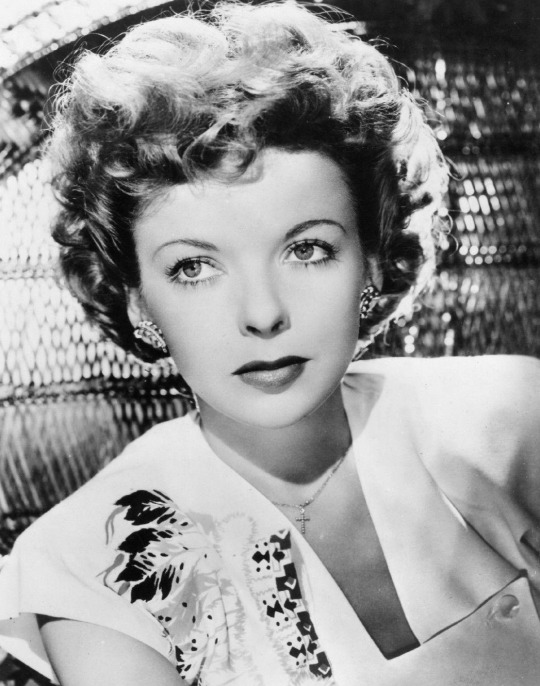
Ida Lupino (4 February 1918 – 3 August 1995) was an English-American actress, singer, director, and producer. She is widely regarded as the most prominent female filmmaker working in the 1950s during the Hollywood studio system. With her independent production company, she co-wrote and co-produced several social-message films and became the first woman to direct a film noir with The Hitch-Hiker in 1953. Among her other directed films the best known are Not Wanted about unwed pregnancy (she took over for a sick director and refused directorial credit), Never Fear (1949) loosely based upon her own experiences battling paralyzing polio, Outrage (1950) one of the first films about rape, The Bigamist (1953) (which was named in the book 1001 Movies You Must See Before You Die) and The Trouble with Angels (1966).
Throughout her 48-year career, she made acting appearances in 59 films and directed eight others, working primarily in the United States, where she became a citizen in 1948. As an actress her best known films are The Adventures of Sherlock Holmes (1939) with Basil Rathbone, They Drive by Night (1940) with George Raft and Humphrey Bogart, High Sierra (1941) with Bogart, The Sea Wolf (1941) with Edward G. Robinson and John Garfield, Ladies in Retirement (1941) with Louis Hayward, Moontide (1942) with Jean Gabin, The Hard Way (1943), Deep Valley (1947) with Dane Clark, Road House (1948) with Cornel Wilde and Richard Widmark, While the City Sleeps (1956) with Dana Andrews and Vincent Price. and Junior Bonner (1972) with Steve McQueen.
She also directed more than 100 episodes of television productions in a variety of genres including westerns, supernatural tales, situation comedies, murder mysteries, and gangster stories. She was the only woman to direct an episode of the original The Twilight Zone series ("The Masks"), as well as the only director to have starred in an episode of the show ("The Sixteen-Millimeter Shrine").
Lupino was born in Herne Hill, London, to actress Connie O'Shea (also known as Connie Emerald) and music hall comedian Stanley Lupino, a member of the theatrical Lupino family, which included Lupino Lane, a song-and-dance man. Her father, a top name in musical comedy in the UK and a member of a centuries-old theatrical dynasty dating back to Renaissance Italy, encouraged her to perform at an early age. He built a backyard theatre for Lupino and her sister Rita (1920–2016), who also became an actress and dancer. Lupino wrote her first play at age seven and toured with a travelling theatre company as a child. By the age of ten, Lupino had memorised the leading female roles in each of Shakespeare's plays. After her intense childhood training for stage plays, Ida's uncle Lupino Lane assisted her in moving towards film acting by getting her work as a background actress at British International Studios.
She wanted to be a writer, but in order to please her father, Lupino enrolled in the Royal Academy of Dramatic Art. She excelled in a number of "bad girl" film roles, often playing prostitutes. Lupino did not enjoy being an actress and felt uncomfortable with many of the early roles she was given. She felt that she was pushed into the profession due to her family history.
Lupino worked as both a stage and screen actress. She first took to the stage in 1934 as the lead in The Pursuit of Happiness at the Paramount Studio Theatre.[10] Lupino made her first film appearance in The Love Race (1931) and the following year, aged 14, she worked under director Allan Dwan in Her First Affaire, in a role for which her mother had previously tested.[11] She played leading roles in five British films in 1933 at Warner Bros.' Teddington studios and for Julius Hagen at Twickenham, including The Ghost Camera with John Mills and I Lived with You with Ivor Novello.
Dubbed "the English Jean Harlow", she was discovered by Paramount in the 1933 film Money for Speed, playing a good girl/bad girl dual role. Lupino claimed the talent scouts saw her play only the sweet girl in the film and not the part of the prostitute, so she was asked to try out for the lead role in Alice in Wonderland (1933). When she arrived in Hollywood, the Paramount producers did not know what to make of their sultry potential leading lady, but she did get a five-year contract.
Lupino starred in over a dozen films in the mid-1930s, working with Columbia in a two-film deal, one of which, The Light That Failed (1939), was a role she acquired after running into the director's office unannounced, demanding an audition. After this breakthrough performance as a spiteful cockney model who torments Ronald Colman, she began to be taken seriously as a dramatic actress. As a result, her parts improved during the 1940s, and she jokingly referred to herself as "the poor man's Bette Davis", taking the roles that Davis refused.
Mark Hellinger, associate producer at Warner Bros., was impressed by Lupino's performance in The Light That Failed, and hired her for the femme-fatale role in the Raoul Walsh-directed They Drive by Night (1940), opposite stars George Raft, Ann Sheridan and Humphrey Bogart. The film did well and the critical consensus was that Lupino stole the movie, particularly in her unhinged courtroom scene. Warner Bros. offered her a contract which she negotiated to include some freelance rights. She worked with Walsh and Bogart again in High Sierra (1941), where she impressed critic Bosley Crowther in her role as an "adoring moll".
Her performance in The Hard Way (1943) won the New York Film Critics Circle Award for Best Actress. She starred in Pillow to Post (1945), which was her only comedic leading role. After the drama Deep Valley (1947) finished shooting, neither Warner Bros. nor Lupino moved to renew her contract and she left the studio in 1947. Although in demand throughout the 1940s, she arguably never became a major star although she often had top billing in her pictures, above actors such as Humphrey Bogart, and was repeatedly critically lauded for her realistic, direct acting style.
She often incurred the ire of studio boss Jack Warner by objecting to her casting, refusing poorly written roles that she felt were beneath her dignity as an actress, and making script revisions deemed unacceptable by the studio. As a result, she spent a great deal of her time at Warner Bros. suspended. In 1942, she rejected an offer to star with Ronald Reagan in Kings Row, and was immediately put on suspension at the studio. Eventually, a tentative rapprochement was brokered, but her relationship with the studio remained strained. In 1947, Lupino left Warner Brothers and appeared for 20th Century Fox as a nightclub singer in the film noir Road House, performing her musical numbers in the film. She starred in On Dangerous Ground in 1951, and may have taken on some of the directing tasks of the film while director Nicholas Ray was ill.
While on suspension, Lupino had ample time to observe filming and editing processes, and she became interested in directing. She described how bored she was on set while "someone else seemed to be doing all the interesting work".
She and her husband Collier Young formed an independent company, The Filmakers, to produce, direct, and write low-budget, issue-oriented films. Her first directing job came unexpectedly in 1949 when director Elmer Clifton suffered a mild heart attack and was unable to finish Not Wanted, a film Lupino co-produced and co-wrote. Lupino stepped in to finish the film without taking directorial credit out of respect for Clifton. Although the film's subject of out-of-wedlock pregnancy was controversial, it received a vast amount of publicity, and she was invited to discuss the film with Eleanor Roosevelt on a national radio program.
Never Fear (1949), a film about polio (which she had personally experienced replete with paralysis at age 16), was her first director's credit. After producing four more films about social issues, including Outrage (1950), a film about rape (while this word is never used in the movie), Lupino directed her first hard-paced, all-male-cast film, The Hitch-Hiker (1953), making her the first woman to direct a film noir. The Filmakers went on to produce 12 feature films, six of which Lupino directed or co-directed, five of which she wrote or co-wrote, three of which she acted in, and one of which she co-produced.
Lupino once called herself a "bulldozer" to secure financing for her production company, but she referred to herself as "mother" while on set. On set, the back of her director's chair was labeled "Mother of Us All".[3] Her studio emphasized her femininity, often at the urging of Lupino herself. She credited her refusal to renew her contract with Warner Bros. under the pretenses of domesticity, claiming "I had decided that nothing lay ahead of me but the life of the neurotic star with no family and no home." She made a point to seem nonthreatening in a male-dominated environment, stating, "That's where being a man makes a great deal of difference. I don't suppose the men particularly care about leaving their wives and children. During the vacation period, the wife can always fly over and be with him. It's difficult for a wife to say to her husband, come sit on the set and watch."
Although directing became Lupino's passion, the drive for money kept her on camera, so she could acquire the funds to make her own productions. She became a wily low-budget filmmaker, reusing sets from other studio productions and talking her physician into appearing as a doctor in the delivery scene of Not Wanted. She used what is now called product placement, placing Coke, Cadillac, and other brands in her films, such as The Bigamist. She shot in public places to avoid set-rental costs and planned scenes in pre-production to avoid technical mistakes and retakes. She joked that if she had been the "poor man's Bette Davis" as an actress, she had now become the "poor man's Don Siegel" as a director.
The Filmakers production company closed shop in 1955, and Lupino turned almost immediately to television, directing episodes of more than thirty US TV series from 1956 through 1968. She also helmed a feature film in 1965 for the Catholic schoolgirl comedy The Trouble With Angels, starring Hayley Mills and Rosalind Russell; this was Lupino's last theatrical film as a director. She continued acting as well, going on to a successful television career throughout the 1960s and '70s.
Lupino's career as a director continued through 1968. Her directing efforts during these years were almost exclusively for television productions such as Alfred Hitchcock Presents, Thriller, The Twilight Zone, Have Gun – Will Travel, Honey West, The Donna Reed Show, Gilligan's Island, 77 Sunset Strip, The Rifleman, The Virginian, Sam Benedict, The Untouchables, Hong Kong, The Fugitive, and Bewitched.
After the demise of The Filmakers, Lupino continued working as an actress until the end of the 1970s, mainly in television. Lupino appeared in 19 episodes of Four Star Playhouse from 1952 to 1956, an endeavor involving partners Charles Boyer, Dick Powell and David Niven. From January 1957 to September 1958, Lupino starred with her then-husband Howard Duff in the sitcom Mr. Adams and Eve, in which the duo played husband-and-wife film stars named Howard Adams and Eve Drake, living in Beverly Hills, California.[22] Duff and Lupino also co-starred as themselves in 1959 in one of the 13 one-hour installments of The Lucy–Desi Comedy Hour and an episode of The Dinah Shore Chevy Show in 1960. Lupino guest-starred in numerous television shows, including The Ford Television Theatre (1954), Bonanza (1959), Burke's Law (1963–64), The Virginian (1963–65), Batman (1968), The Mod Squad (1969), Family Affair (1969–70), The Wild, Wild West (1969), Nanny and the Professor (1971), Columbo: Short Fuse (1972), Columbo: Swan Song (1974) in which she plays Johnny Cash's character's zealous wife, Barnaby Jones (1974), The Streets of San Francisco, Ellery Queen (1975), Police Woman (1975), and Charlie's Angels (1977). Her final acting appearance was in the 1979 film My Boys Are Good Boys.
Lupino has two distinctions with The Twilight Zone series, as the only woman to have directed an episode ("The Masks") and the only person to have worked as both actor for one episode ("The Sixteen-Millimeter Shrine"), and director for another.
Lupino's Filmakers movies deal with unconventional and controversial subject matter that studio producers would not touch, including out-of-wedlock pregnancy, bigamy, and rape. She described her independent work as "films that had social significance and yet were entertainment ... base on true stories, things the public could understand because they had happened or been of news value." She focused on women's issues for many of her films and she liked strong characters, "[Not] women who have masculine qualities about them, but [a role] that has intestinal fortitude, some guts to it."
In the film The Bigamist, the two women characters represent the career woman and the homemaker. The title character is married to a woman (Joan Fontaine) who, unable to have children, has devoted her energy to her career. While on one of many business trips, he meets a waitress (Lupino) with whom he has a child, and then marries her.[25] Marsha Orgeron, in her book Hollywood Ambitions, describes these characters as "struggling to figure out their place in environments that mirror the social constraints that Lupino faced".[13] However, Donati, in his biography of Lupino, said "The solutions to the character's problems within the films were often conventional, even conservative, more reinforcing the 1950s' ideology than undercutting it."
Ahead of her time within the studio system, Lupino was intent on creating films that were rooted in reality. On Never Fear, Lupino said, "People are tired of having the wool pulled over their eyes. They pay out good money for their theatre tickets and they want something in return. They want realism. And you can't be realistic with the same glamorous mugs on the screen all the time."
Lupino's films are critical of many traditional social institutions, which reflect her contempt for the patriarchal structure that existed in Hollywood. Lupino rejected the commodification of female stars and as an actress, she resisted becoming an object of desire. She said in 1949, "Hollywood careers are perishable commodities", and sought to avoid such a fate for herself.
Ida Lupino was diagnosed with polio in 1934. The New York Times reported that the outbreak of polio within the Hollywood community was due to contaminated swimming pools. The disease severely affected her ability to work, and her contract with Paramount fell apart shortly after her diagnosis. Lupino recovered and eventually directed, produced, and wrote many films, including a film loosely based upon her travails with polio titled Never Fear in 1949, the first film that she was credited for directing (she had earlier stepped in for an ill director on Not Wanted and refused directorial credit out of respect for her colleague). Her experience with the disease gave Lupino the courage to focus on her intellectual abilities over simply her physical appearance. In an interview with Hollywood, Lupino said, "I realized that my life and my courage and my hopes did not lie in my body. If that body was paralyzed, my brain could still work industriously...If I weren't able to act, I would be able to write. Even if I weren't able to use a pencil or typewriter, I could dictate."[31] Film magazines from the 1930s and 1940s, such as The Hollywood Reporter and Motion Picture Daily, frequently published updates on her condition. Lupino worked for various non-profit organizations to help raise funds for polio research.
Lupino's interests outside the entertainment industry included writing short stories and children's books, and composing music. Her composition "Aladdin's Suite" was performed by the Los Angeles Philharmonic Orchestra in 1937. She composed this piece while on bedrest due to polio in 1935.
She became an American citizen in June 1948 and a staunch Democrat who supported the presidency of John F. Kennedy. Lupino was Catholic.
Lupino died from a stroke while undergoing treatment for colon cancer in Los Angeles on 3 August 1995, at the age of 77. Her memoirs, Ida Lupino: Beyond the Camera, were edited after her death and published by Mary Ann Anderson.
Lupino learned filmmaking from everyone she observed on set, including William Ziegler, the cameraman for Not Wanted. When in preproduction on Never Fear, she conferred with Michael Gordon on directorial technique, organization, and plotting. Cinematographer Archie Stout said of Ms. Lupino, "Ida has more knowledge of camera angles and lenses than any director I've ever worked with, with the exception of Victor Fleming. She knows how a woman looks on the screen and what light that woman should have, probably better than I do." Lupino also worked with editor Stanford Tischler, who said of her, "She wasn't the kind of director who would shoot something, then hope any flaws could be fixed in the cutting room. The acting was always there, to her credit."
Author Ally Acker compares Lupino to pioneering silent-film director Lois Weber for their focus on controversial, socially relevant topics. With their ambiguous endings, Lupino's films never offered simple solutions for her troubled characters, and Acker finds parallels to her storytelling style in the work of the modern European "New Wave" directors, such as Margarethe von Trotta.
Ronnie Scheib, who issued a Kino release of three of Lupino's films, likens Lupino's themes and directorial style to directors Nicholas Ray, Sam Fuller, and Robert Aldrich, saying, "Lupino very much belongs to that generation of modernist filmmakers." On whether Lupino should be considered a feminist filmmaker, Scheib states, "I don't think Lupino was concerned with showing strong people, men or women. She often said that she was interested in lost, bewildered people, and I think she was talking about the postwar trauma of people who couldn't go home again."
Author Richard Koszarski noted Lupino's choice to play with gender roles regarding women's film stereotypes during the studio era: "Her films display the obsessions and consistencies of a true auteur... In her films The Bigamist and The Hitch-Hiker, Lupino was able to reduce the male to the same sort of dangerous, irrational force that women represented in most male-directed examples of Hollywood film noir."
Lupino did not openly consider herself a feminist, saying, "I had to do something to fill up my time between contracts. Keeping a feminine approach is vital — men hate bossy females ... Often I pretended to a cameraman to know less than I did. That way I got more cooperation." Village Voice writer Carrie Rickey, though, holds Lupino up as a model of modern feminist filmmaking: "Not only did Lupino take control of production, direction, and screenplay, but [also] each of her movies addresses the brutal repercussions of sexuality, independence and dependence."
By 1972, Lupino said she wished more women were hired as directors and producers in Hollywood, noting that only very powerful actresses or writers had the chance to work in the field. She directed or costarred a number of times with young, fellow British actresses on a similar journey of developing their American film careers like Hayley Mills and Pamela Franklin.
Actress Bea Arthur, best remembered for her work in Maude and The Golden Girls, was motivated to escape her stifling hometown by following in Lupino's footsteps and becoming an actress, saying, "My dream was to become a very small blonde movie star like Ida Lupino and those other women I saw up there on the screen during the Depression."
Lupino has two stars on the Hollywood Walk of Fame for contributions to the fields of television and film — located at 1724 Vine Street and 6821 Hollywood Boulevard.
New York Film Critics Circle Award - Best Actress, The Hard Way, 1943
Inaugural Saturn Award - Best Supporting Actress, The Devil's Rain, 1975
A Commemorative Blue Plaque is dedicated to Lupino and her father Stanley Lupino by The Music Hall Guild of Great Britain and America and the Theatre and Film Guild of Great Britain and America at the house where she was born in Herne Hill, London, 16 February 2016
Composer Carla Bley paid tribute to Lupino with her jazz composition "Ida Lupino" in 1964.
The Hitch-Hiker was inducted into the National Film Registry in 1998 while Outrage was inducted in 2020.
#ida lupino#classic hollywood#classic movie stars#golden age of hollywood#old hollywood#1930s hollywood#1940s hollywood#1950s hollywood#1960s hollywood#1970s hollywood#hollywood legend
25 notes
·
View notes